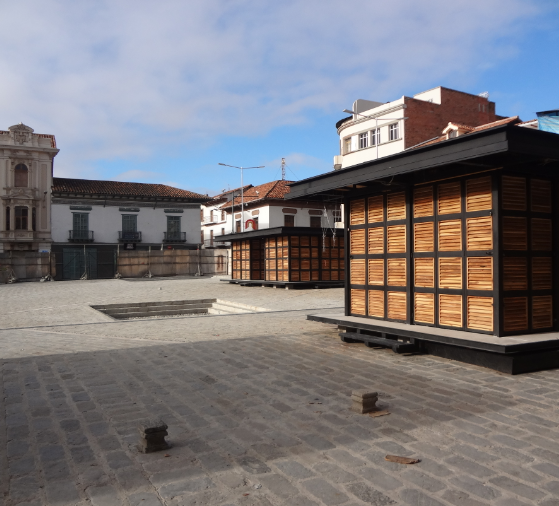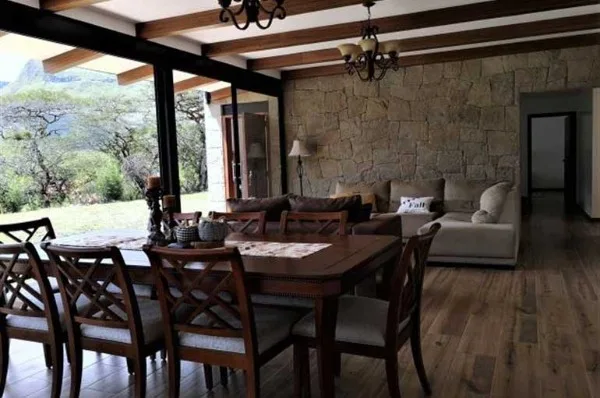San Francisco Plaza, a focus of Cuenca civic and cultural life for more than 450 years, reopens today after 18-month renovation
Editor’s note: The renovated San Francisco Plaza will be inaugurated this afternoon at 6. President Lenin Moreno will be in town for the ceremony.
By Liam Higgins
As it prepares for its reopening in today, it’s worth a look back at the colorful, sometimes bloody, history of Cuenca’s iconic San Francisco Plaza.
It has been a coal yard, an execution field, a carnival grounds, a children’s playground, and an arena for pronouncements by government officials. Almost from its beginnings, more than 450 years ago, it has also been a place where country and city folk brought their produce and products to sell.

San Francisco Plaza 100 years ago.
Efforts to modernize the plaza has engendered conflicts among merchants, townspeople and politicians for at least 200 years.
The plaza assumed its current contours in the 1700s, following a fire that cleared part of the block bounded by Calles Padre Aguirre, Presidente Cordova, General Torres and San Francisco — before that, it occupied only half of the block. Shortly afterward, it became the preferred location for fairs and carnivals as well as executions, also considered a form of entertainment at the time. Following the battles that briefly established Cuenca as an independent country in 1820, dozens of enemy soldiers and local traitors went to the gallows in the plaza. Later, common criminals died before firing squads.

The renovated San Francisco Plaza reopens January 29.
Soon after independence, the plaza underwent a transformation when Cuenca officials decided to “clean up” the Plaza de Armas, today’s Parque Calderon, and ordered all commercial activity relocated to San Francisco. According to historian Ana Luz Borrero, the relocation of the Plaza de Armas vendors caused a minor uproar as they jockeyed for space with the vendors already in San Francisco.
The plaza saw another big change in 1953 when the city established the Diez de Agosto market two blocks to the south, on Calle Larga. Most of the plaza’s food vendors relocated to the new market but a few remained. During the next decade, the commerce of the plaza focused on clothing and household goods. In addition, vendors also sold fireworks, coal, guns, incense and, until the late 1950s, real shrunken heads from the Amazon. During the period, the plaza served as the city bus station and was home to the Cuenca’s first gas station.

Otavalan merchants have been selling their wares at the plaza since the 1960s.
In 1956, the city made its first attempt to reclaim and rejuvenate the plaza. The mayor and city council claimed that the vendors were “illegal squatters” on public property and that they posed security and health threats. The attempt failed due to infighting among council members and a shortage of funds.
Three more recent attempts — in 2004, 2006 and 2010 — to rebuild the square also failed due to disagreements with vendors and lack of consensus between political leaders for a new design.
In 2016, current Mayor Marcelo Cabrera finally pushed through a plan that won a majority of city council votes. The new design also won approval, although grudgingly, of the vendors’ association although many individual vendors say they are still unhappy with many details of the plan. Among the more controversial changes was a rule that vendors consolidate operations with members of their immediate family.
“We are tired of fighting,” says Graciela Perez, who has sold kitchen ware on the plaza for almost 20 years. “We are still talking to the mayor about some things and hope they will be resolved.”
Perez worries that a way of life will be lost with the new design but says that that way of life is changing anyway. “My children are not interested in taking my place here and it is the same with the other sellers,” she says. “Even without the plan, most of this will be gone in a generation. People will be buying what I sell in a department store instead of the market.”
She adds: “Soon, the tourists will have the place to themselves.”
The renovated plaza will have 96 units for vendors, distributed around the perimeter of the open square.
The plaza project is part of a $4 million project to restore the plaza and surrounding buildings. Work on the plaza itself cost the government $1.4. Some work remains to be finished, including the plantings of small trees and shrubs.


















